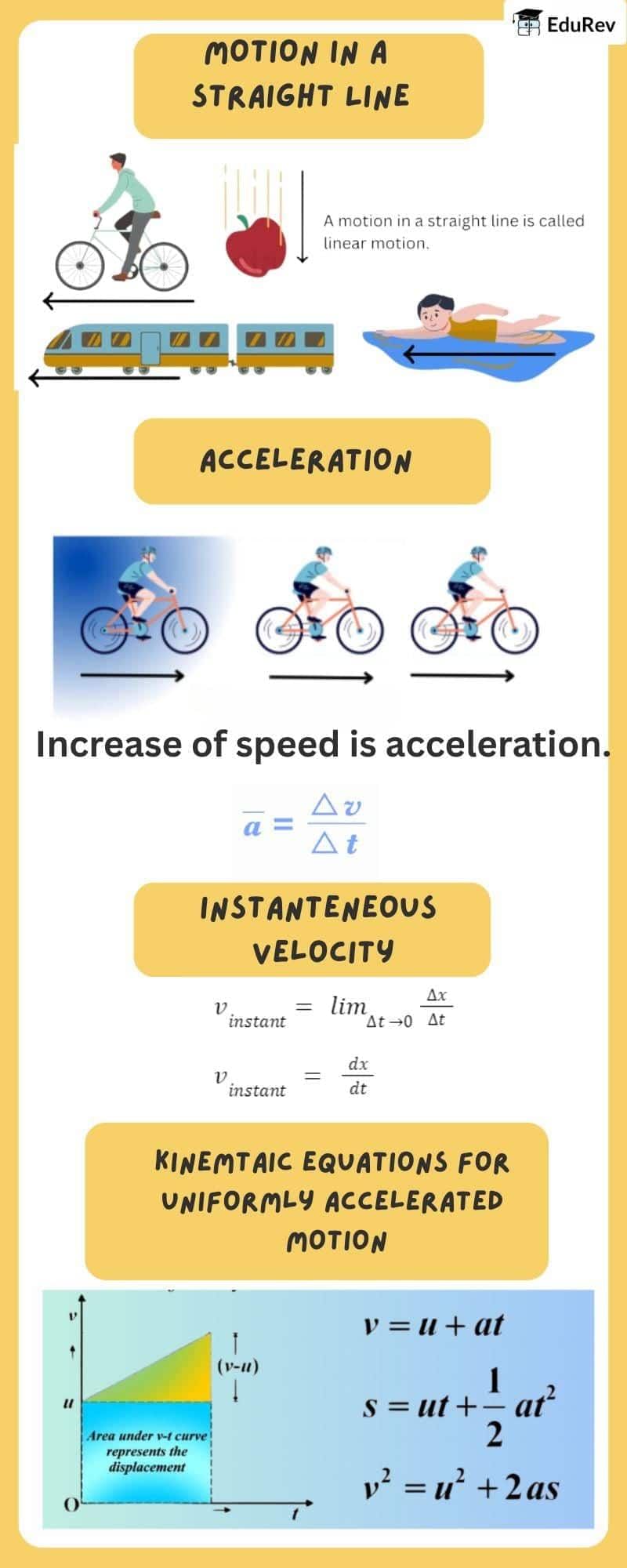NEET Exam > NEET Notes > Physics Class 11 > Infographics: Motion in a Straight Line
Infographics: Motion in a Straight Line | Physics Class 11 - NEET PDF Download

The document Infographics: Motion in a Straight Line | Physics Class 11 - NEET is a part of the NEET Course Physics Class 11.
All you need of NEET at this link: NEET
|
96 videos|367 docs|98 tests
|
FAQs on Infographics: Motion in a Straight Line - Physics Class 11 - NEET
| 1. What is the definition of motion in a straight line? |  |
Ans. Motion in a straight line refers to the movement of an object along a straight path. It is characterized by the object's position changing with respect to time, and can be described using concepts such as displacement, velocity, and acceleration.
| 2. What are the key equations of motion used in straight-line motion? |  |
Ans. The key equations of motion for straight-line motion are as follows:
1. v = u + at
2. s = ut + ½at²
3. v² = u² + 2as
Where:
- v = final velocity
- u = initial velocity
- a = acceleration
- t = time
- s = displacement
These equations help to relate the different parameters of motion.
| 3. How is acceleration defined in the context of motion in a straight line? |  |
Ans. Acceleration is defined as the rate of change of velocity of an object with respect to time. It can be calculated using the formula:
a = (v - u) / t
Where:
- a = acceleration
- v = final velocity
- u = initial velocity
- t = time taken for the change in velocity.
Acceleration can be positive (speeding up) or negative (slowing down).
| 4. What is the difference between speed and velocity? |  |
Ans. Speed is a scalar quantity that refers to how fast an object is moving, regardless of its direction. It is calculated as the distance traveled over time. Velocity, on the other hand, is a vector quantity that includes both the speed of the object and the direction of its motion. Thus, while speed can be represented simply as a numerical value, velocity must also indicate the direction.
| 5. How do you graphically represent motion in a straight line? |  |
Ans. Motion in a straight line can be graphically represented using a distance-time graph. In this graph, the x-axis represents time and the y-axis represents distance. A straight line on this graph indicates uniform motion, while a curved line indicates non-uniform motion. The slope of the line gives the speed of the object: a steeper slope means higher speed, while a flat line indicates that the object is at rest.
Related Searches





















